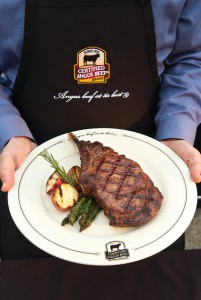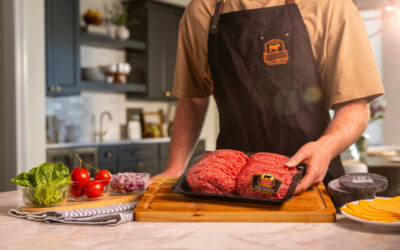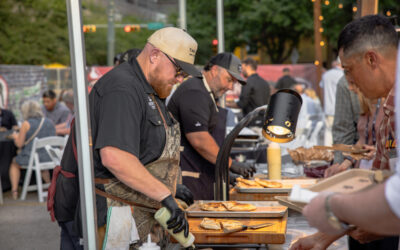
Give it a break

Patience is not my strong suit.
But life has a way of giving us plenty of chances to develop character traits. (In my case, a house full of kids seems to provide daily teaching opportunities.)
Patience is probably one of the most valuable lessons I’ve learned from the Certified Angus Beef® brand culinary team and other meat experts, too.
Listen carefully to meat scientist Jeff Savell of Texas A & M University: “If you are cutting into meat and you are getting a lot of juices coming out that’s an automatic sign you’re not letting it rest long enough.”

That’s right. When you take your steak off the grill, you must let it sit (rest) for several minutes (5 for steaks and 10 to 15 for larger items like a roast) to let the moisture redistribute.
Our own Chef Michael Ollier describes it like this: “When you have such high heat, the water molecules rushing all around are like water balloons that are blown up almost to capacity. If you run a knife through that steak when it’s in that state—when all the water molecules are running around and so ready to burst, you actually do burst them. That’s why you see all the juices running.
“If you give it a chance to relax, the water will realign itself within the fibers of the meat and they’ll be more like a relaxed balloon that’s only filled half way. Cutting a rested steak will therefore keep juices in each bite.”

When it comes to slicing, there are no secrets. The best method is always to slice thinly across the grain, the chef says.
“You almost always need a knife that’s twice as wide as the meat you’re cutting, and make sure they’re sharp,” says Dr. Savell.
Leftovers aren’t that common in the Reiman house (also a result of that houseful of kids), but if you happen to find yourself with half a ribeye, don’t fret.
Michael suggests you wrap it tightly or store it in a zipper-lock bag and slice it thinly to serve it cold as part of a wrap or a steak salad.
Starting with quality beef will make the experience better, both first and the second time around. “It’s an insurance policy,” Michael says.
May your bottom line be filled with black ink and your bellies with better beef!
Miranda
Be sure to check out these past posts in our Beef Month series, covering time and temperature and serving tips.
You may also like
Success, Despite Challenges
Today’s market is complex and competitive. The collective effort of stakeholders across the supply chain positions Certified Angus Beef to meet the record demand for premium beef moving forward. Signals across the beef industry are clear and Angus farmers and ranchers seeking high-quality genetics that deliver premium beef are producing a product in high demand.
Keep the Supply Coming
A record-high 800 registrants from 17 countries gathered in Austin, Texas, to learn more about CAB, become inspired by the culinary work of chefs and pitmasters, and celebrate sales and production success. But at the forefront: supply and demand, a reflection of the chaotic past year, and preparing for what’s ahead.
Consumer Demand, Power of Quality
Demand for high-quality beef persists. But with that demand comes challenges. From tight cattle supplies to higher costs and increasing pressure on retailers to deliver a consistent eating experience, the pressure is on. David O’Diam, CAB VP of retail, addressed the current retail beef environment, highlighting both opportunities and challenges in today’s marketplace.



